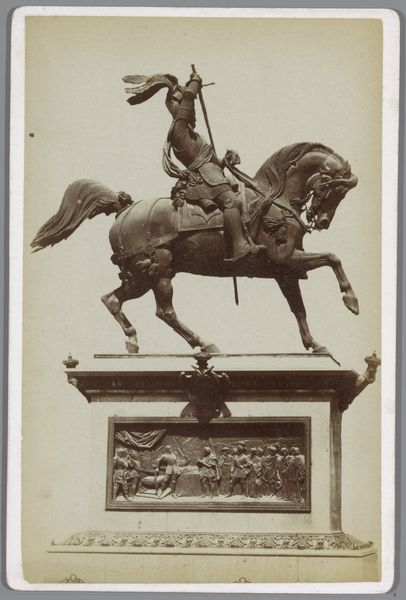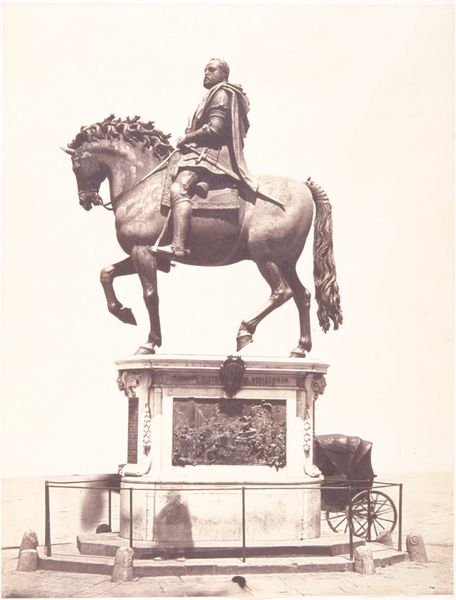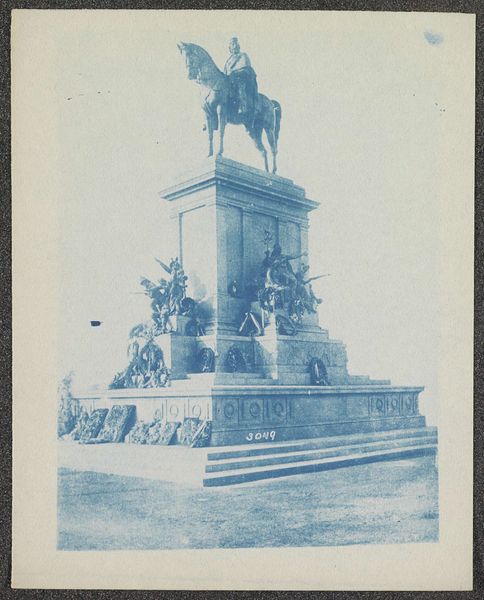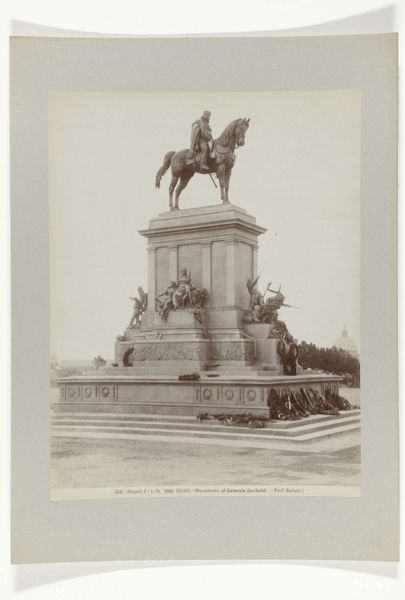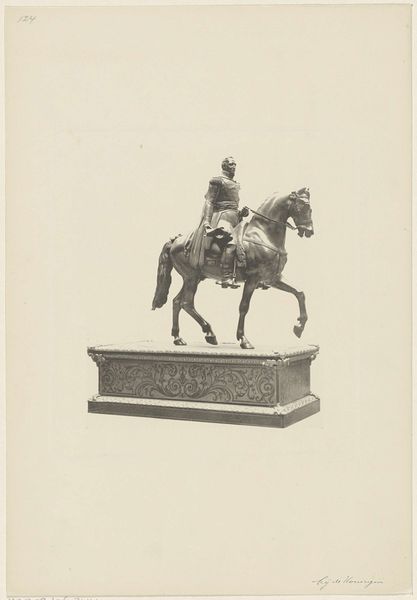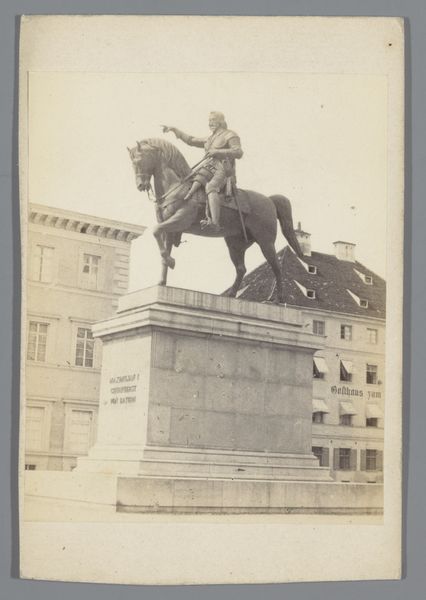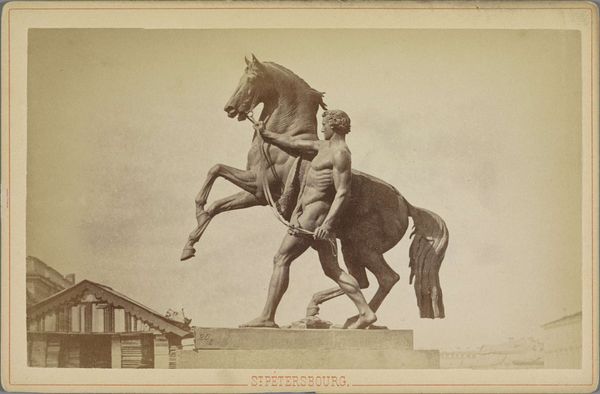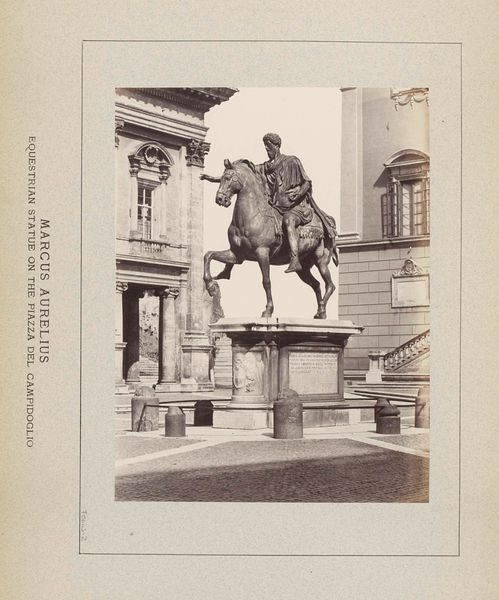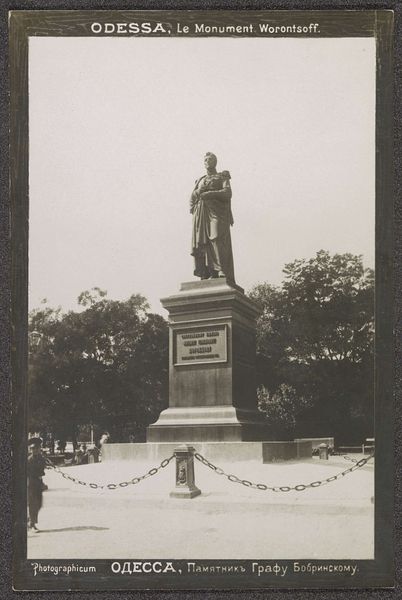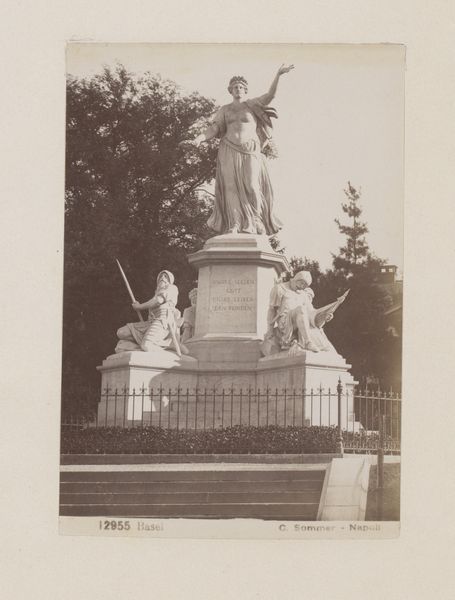
bronze, photography, sculpture
#
portrait
#
landscape
#
bronze
#
photography
#
historical photography
#
sculpture
Dimensions: Image: 18.4 x 24.2 cm (7 1/4 x 9 1/2 in.) Mount: 21.2 x 27.6 cm (8 3/8 x 10 7/8 in.)
Copyright: Public Domain
Editor: So, this is Captain R.B. Hill’s photograph, “Lord Hardinge's Monument, Calcutta," dating from the 1850s. It pictures a bronze equestrian statue. The photograph itself has this sepia tone, making the statue seem to almost float. How do you read this photograph? Curator: It's interesting how Hill's photograph isolates the monument. I'm immediately drawn to thinking about the materials and the labor involved in producing both the bronze sculpture and the photograph itself. Bronze casting, especially at that scale, was a significant industrial undertaking, and early photography required specialized knowledge and equipment. Do you see a tension there, between the handmade and the machine-made? Editor: Definitely! It's easy to forget how much specialized skill went into even early photography. Focusing on the materiality, the choice to photograph a bronze statue... is that significant? Curator: Absolutely. Bronze as a material carries so much historical weight – linked to power, commemoration, and even colonialism itself, especially in this context. Consider the social context of erecting such a monument: who commissioned it, who profited from its production, and what message was it intended to convey to the people of Calcutta? Hill’s photographic process itself depended on material extraction and refinement, from silver in the emulsion to the paper support, inextricably linking aesthetic representation with concrete exploitation of both labor and resources. Editor: So, viewing it through this materialist lens gives the image a whole different level of complexity. I hadn't thought about the colonial implications so directly. Curator: It reveals how art is always embedded within systems of power and production, demanding we look beyond the image and engage with the tangible realities that brought it into being. The monument stands as an assertion of British power, manifested through material means. Editor: I've learned to see beyond the subject of the image and look into the ways it was made and the socioeconomic factors that influenced it. Thank you! Curator: A good reminder that images aren't just representations, they are also material objects with their own biographies and legacies.
Comments
No comments
Be the first to comment and join the conversation on the ultimate creative platform.
